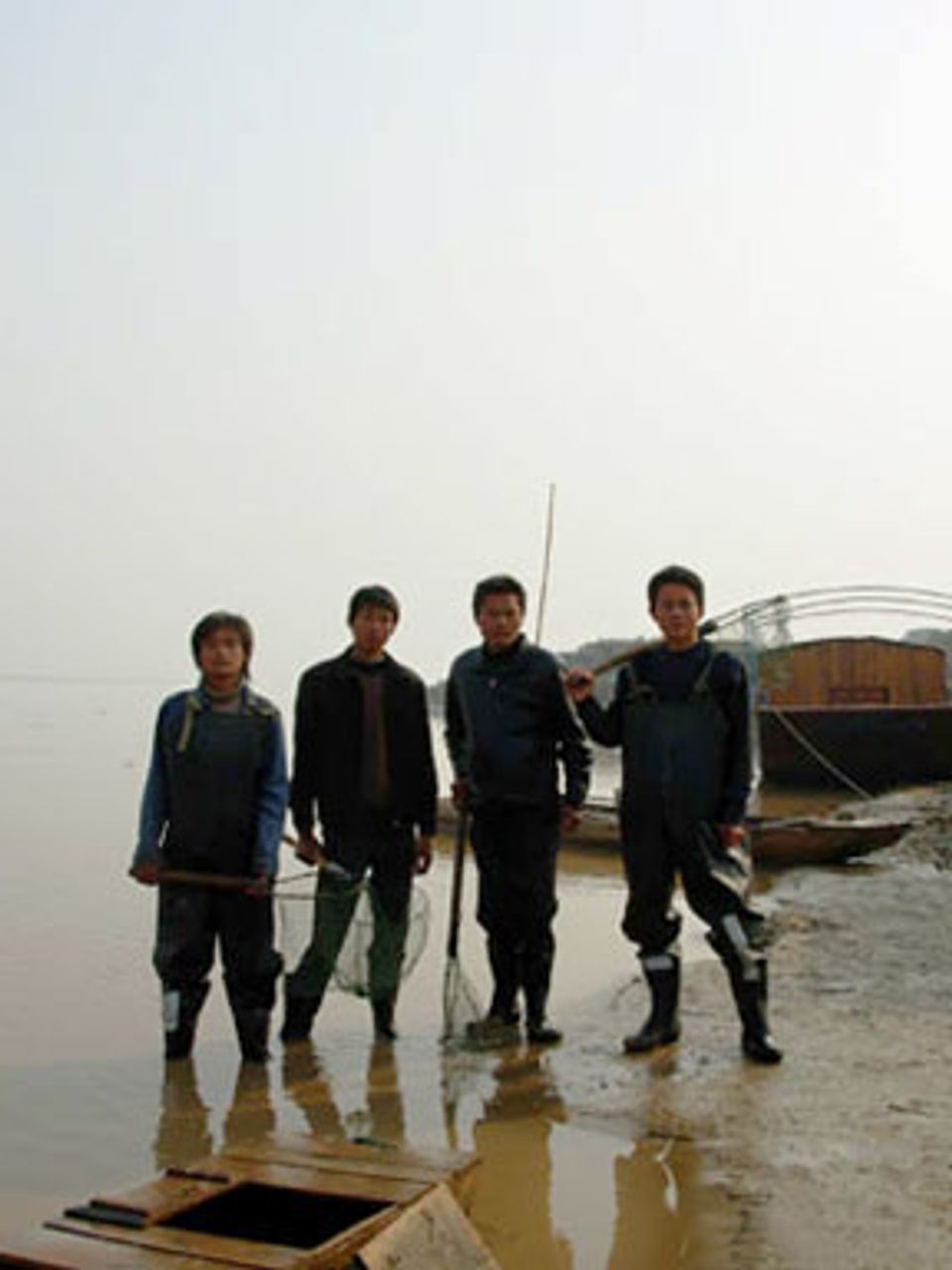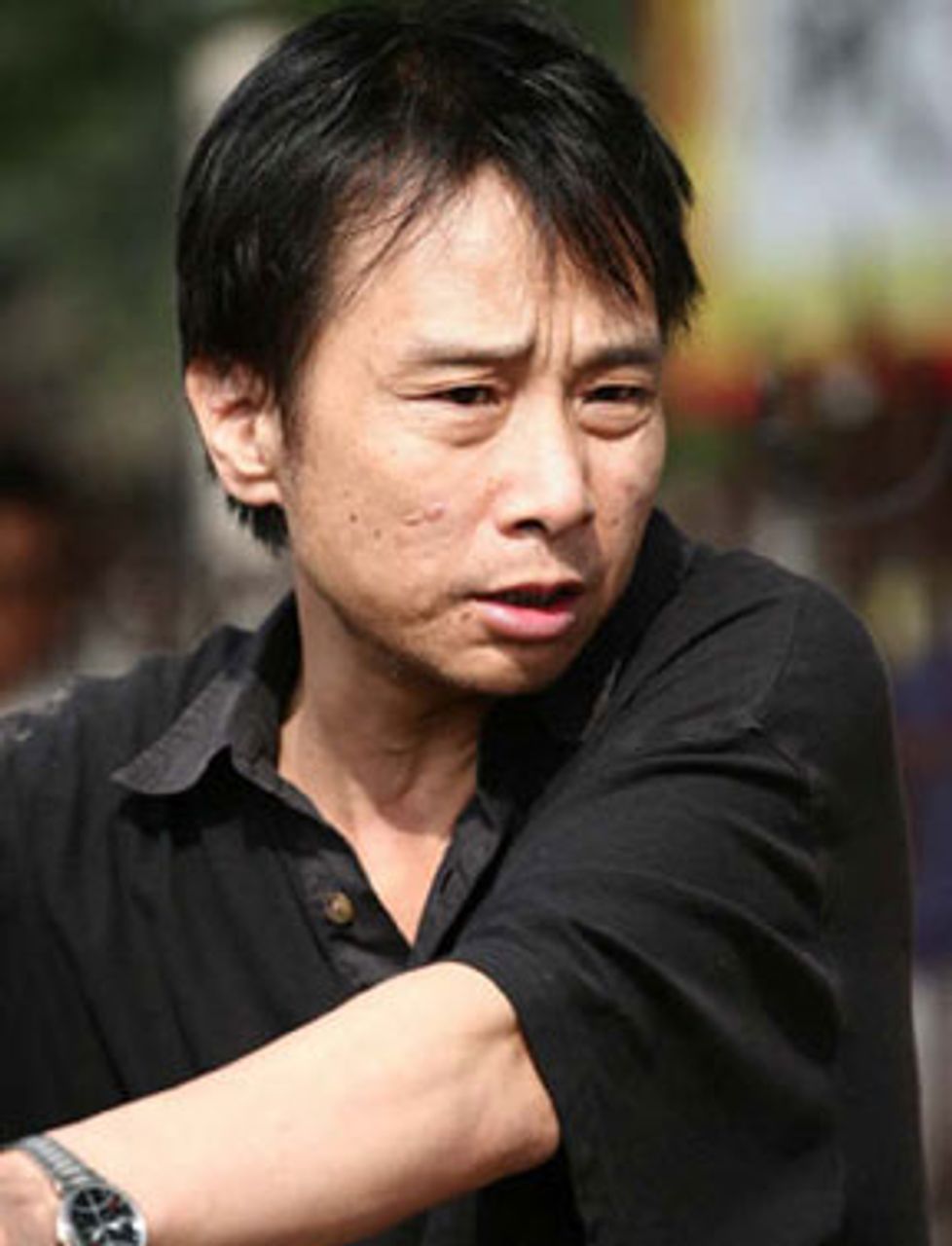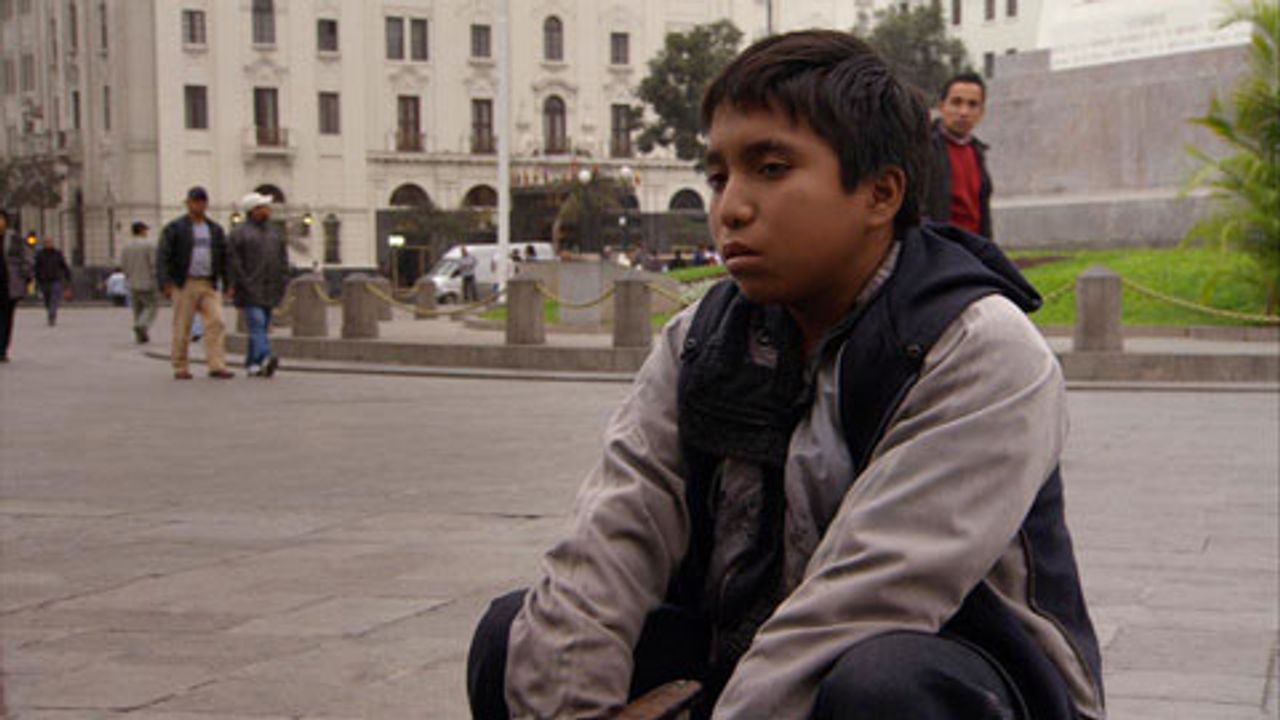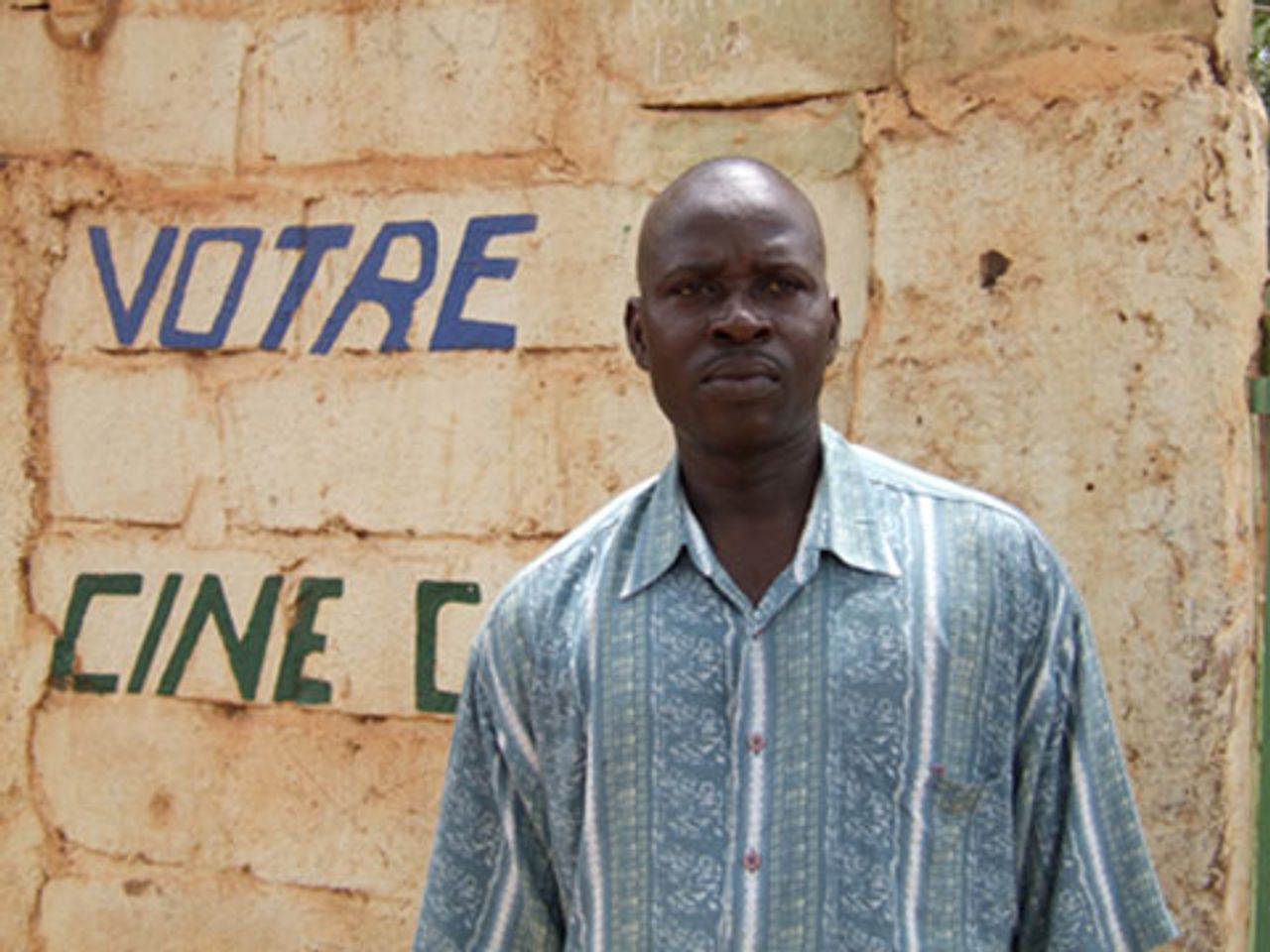This is the first of a series of articles on the 2009 San Francisco International Film Festival, held April 23-May 7.
Severe artistic unevenness, a sharp contrast between advanced technical means and the inadequacy of thought and expression, a lagging behind the realities of contemporary life—these are some of the qualities of international filmmaking in recent years. And that continues in the first year following the greatest economic crash since 1929.
Where would a greater artistic harmony come from at a time like ours? The artist can be at one, in the broadest sense of the term, with the existing social order—or he or she can be in deliberate opposition, aligned wholly or partially with an ascending social class. In either case, historically speaking, a certain equilibrium is possible. But a period of social reaction and malignant inequality, in which open class conflict and resistance are suppressed? The artists don’t yet see a mass popular opposition. That leads to many of the present difficulties.
Existing social life is unappealing, even repugnant, while few artists can envision an alternative future at this point. No serious film writer or director will draw inspiration from the stock market, the cruise missile and “enhanced interrogation.” The more cynical become “market” artists; others chase their own tails in formal circles—a portion of the filmmakers go in for “radical identity politics,” which usually ends badly, in self-involvement and even self-pity. The more sensitive and sympathetic do small, sometimes intricately detailed pictures, since they have been sternly warned away from “grand narratives.”
The largest category includes movies that contain a number of these qualities in varying quantities: films essentially one-quarter or one-third-completed, with elements of social conscience, but also traces of self-centeredness, unresolved or un-thought-through conceptions, passivity, films perceptive in parts and shallow in others. This is what we confront for the most part.
How many filmmakers would solidarize themselves with Orson Welles’s comment to interviewers in 1958, in the midst of his woes with backers and producers? Welles said, “Our work once finished has not so much importance in my opinion as that of most aesthetes: it is the act that interests me, not the result, and I am taken with the result only when there is the smell of human sweat, or a thought.” (Senses of Cinema)
There are a great many talented people, but the results are limited for the most part. Few of the current artistic trends or individual works correspond in a meaningful way to our epoch.
Consistency is rare, within a career, even within a single work. A promising early work is followed by a disappointing one, sometimes wildly disappointing. The various genres insist on being “over the top,” with the result that credibility is strained and even destroyed. Vulgarity is mistaken for comedy, absurd pyrotechnics and special effects stand in for “action,” unrestrained sadism reigns in certain horror films. There is an element of social disorientation in this, but bound up with it is the loss of a sense of artistic proportionality. How many filmmakers are even reliably entertaining?
We await—and fight for—a change. Meanwhile we pay attention to those films that treat the human situation in a serious manner, or at least tend, so to speak, to suffering humanity in its current state.
The recent San Francisco film festival, its 52nd, presented 151 films from 55 countries to a combined audience of 82,000 people.
“Doomed” to fish
River People, directed by He Jianjun (born 1960) from China, is a well-done, grim work, about an extended family of fishermen. Two young cousins, Laba and Baowa, along with relatives, fish in the muddy water of the Yellow River, China’s second longest. They live primitively on their boats. This is a harsh existence, with almost no interruptions or pleasures. Every day is the same, except when it gets cold—the family runs a restaurant in winter. The sky is eternally white and foggy, the water and mud are brown. Those are virtually the only colors in the film.
 River People
River PeopleWhen a train sounds in the distance, Baowa says, “I’ve never taken a train.” He has dreams of doing so. At one point we see fish wriggling helplessly and hopelessly in shallow water aboard a boat. Is this perhaps a metaphor for the cousins themselves?
Baowa has a conflict with his father. He has a sixth-grade education, more than anyone else in family history. His father says, “You are better than me. You are educated.” The older man, Laba’s uncle, is frightened of the outside world. He had one son who went to work in a coal mine and died when he fell, drunk, down a shaft. A sister-in-law ran off with another man, and her husband, a brother of Baowa’s father, left the river and went to look for her. He forbids Baowa to leave.
Laba, the son of parents who have both gone off, lives with his uncle. He is happy with his lot, or resigned to it. He narrates the film: “I am good at rowing a boat. I like fishing. I am doomed to fish all my life.” His relatives tease him about getting married.
Much of the time the family members bark at each other, their relations with one another nearly as severe as their relations with nature and the rest of society. “You’re a good for nothing!” The cousins are roused from bed: “Get up! Cast your nets!” The only relaxation comes during a couple of mealtimes. At New Year’s, there are firecrackers and dumplings: “Go ahead, stuff yourself.”
In the end, Laba takes Baowa to the bus station. He’s going to Beijing. “He’ll be back,” is the prediction. In the final shot, Laba drags a wooden container of fish along the river bank, a brutal task that might come from another century.
River People is intelligently and sensitively composed. More or less a fiction film, but apparently shot with real fishermen and their families, it seems close to the painful truth. The language, imagery and camera work speak to the director’s desire to reveal an aspect of life. He is not merely showing off.
 Director He Jianjun
Director He JianjunHe Jianjun is a member of China’s so-called “sixth generation” of filmmakers. In 1995, I saw his film, Postman, at the Toronto film festival and was deeply impressed by it. I later wrote that the film was “a devastating portrait of life in a shabby Beijing neighborhood known as the ‘Happiness District.’ A damp grey and yellow fog envelops the run-down housing blocks and their inhabitants....
“The film, perhaps the festival's finest, is a brutal account of psychological damage produced by a repressive and stifling social system. He Jianjun has now been banned from making films by the Chinese authorities.” Postman was proscribed in China until 2004.
He has made several films since his difficulties with the authorities. River People indicates that he remains a serious and committed figure.
The Peruvian tragedy
Documentary filmmaker Heddy Honigmann, the daughter of Holocaust survivors, was born in Lima, Peru, in 1951. After studying biology and literature at university there, she left Peru in 1973 and traveled in Europe and Israel. She has lived in the Netherlands for decades and presently resides in Amsterdam.
 Oblivion
OblivionHonigmann returned to Lima to make Oblivion, her film about the tragic situation of the Peruvian people. The framework is a series of interviews with Lima residents—bartenders, waitresses, shopkeepers, small businessmen, street people—intercut with scenes of various Peruvian presidents taking the oath of office and swearing to “God and the Holy Apostles to faithfully uphold the office of President of the Republic which the nation has entrusted me....” The film makes clear these were all thieves or worse. When the documentarist suggests to one interviewee, who makes the presidential sashes, that “our presidents are still bandits,” he replies, “Bandit is too good a word, really.”
A bartender at a fashionable spot provides the recipe for Pisco Sour, the “national cocktail of Peru,” and adds, “I’ve made it for many presidents. When I think of them I see history as a badly-mixed cocktail made of semi-democratic elections, coups, terrorism and corruption.” He takes note of the “more than 70,000 deaths due to violence.” The recent presidential elections? A choice between “Hepatitis B or AIDS. We Peruvians chose Hepatitis B, otherwise known as Alan García.”
Honigmann talks with a shoeshine boy, Henry, who works from 7 a.m. till midnight on downtown streets, a boy with one of the saddest faces you will ever see. She cuts to him from shots of rich kids talking into their cell phones. Henry doesn’t go to school, he’s 14, from a town in the north of Peru. The director asks, “Do you have any nice memories?” Henry: “No.” Honigmann: “None at all?” Henry: “None.” Honigmann: “Any bad memories?” Henry: “Neither.” Honigmann: “No dreams?” Henry: “Dreams? I hardly ever dream.”
A waitress, quiet and dignified, in a downtown restaurant takes the filmmaker to her home, a hovel in the hills above Lima. On a street with other shanties, and rubble and garbage. She has lived there for more than 20 years with her mother. The woman took part in an occupation of a hotel in 2003 when it closed its doors on the employees. Her husband left her at that point. “I told him we were defending our rights.” The mother explains, “In winter, we freeze to death.”
Kids beg from cars on downtown streets, day and night. A guy juggles glass balls, little girls perform gymnastics, another sings. A waiter invites Honigmann to his “modest home.” His wife has never eaten at his restaurant. “It’s expensive.” He describes late-night killings in his hometown—was it the terrorists or special forces? “Nobody knows.” The wife’s face is expressive and heartbreaking!
The director writes, “A film about poverty and poetry in a country plundered by the powerful. But also a film where the powerless resist being confined to oblivion.” She also says: “Ironically, the presidents become just another figure in a long line of corrupt administrations, whereas the common working class people that are interviewed are endearing and charismatic. These common people reveal a strength and grace that inspires and is worth remembering.”
This is not the end-all and be-all of filmmaking—the director has not broken extraordinary new ground—but it is honest and moving.
The fate of African cinemas
 Sacred Places
Sacred PlacesJean-Marie Teno (Chief!) from Cameroon has made a film centered on a local “cine-club,” where movies are shown at low prices, in Ouagadougou, the capital of Burkina Faso. The production notes describe it as a work “about the fight to survive and to maintain one’s dignity in a hostile environment.”
Teno begins with the social conditions of the neighborhood, St-Leon, “a modest neighborhood tucked between the cathedral and two mosques.” Joblessness and poverty are pervasive. For the youth especially, there is no work. One says, “Last year I voted and it changed nothing.”
Bouba, the cine-club manager, rents a courtyard for $US60 a month and shows films, a wild combination of martial arts movies, Bollywood, European thrillers, Hollywood action pictures, and some African films. The African films, however, are the most expensive.
Although most of the local residents are Catholics, there are Muslims, too, and during the day the locale is used for prayers. Each day Bouba tacks up the night-time schedule. People wander in. After a showing, his take is US$8.50.
He and his friends discuss politics a little. Corruption comes up, accompanied by a story about a politician. “Let’s drop politics.”
The film explains that movie theaters are closing in Africa “because people’s purchasing power can’t support these theaters.”
The film asks who is speaking to Africans? “To say what? And to whom?” These are legitimate questions, and the various figures in this film are endearing, too, but an exclusive focus on the danger to African cinema and cinemas tends to overshadow the threat to the survival of wide layers of the African population within the present imperialist system.
Sacred Places concludes that the solution is “up to the African filmmaker himself.” No, film can’t save itself. Everything depends on the overthrow of capitalism on a global scale and the rational reorganization of the planet’s resources, including the intellectual and technical.
To be continued
